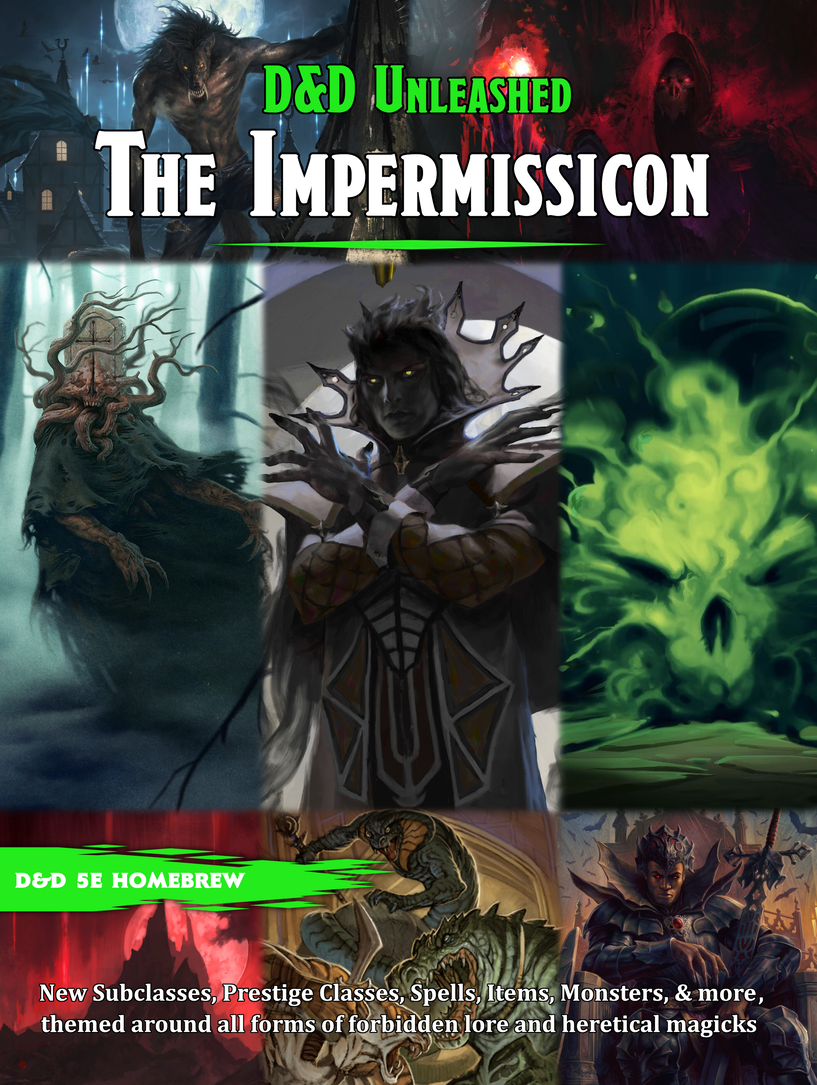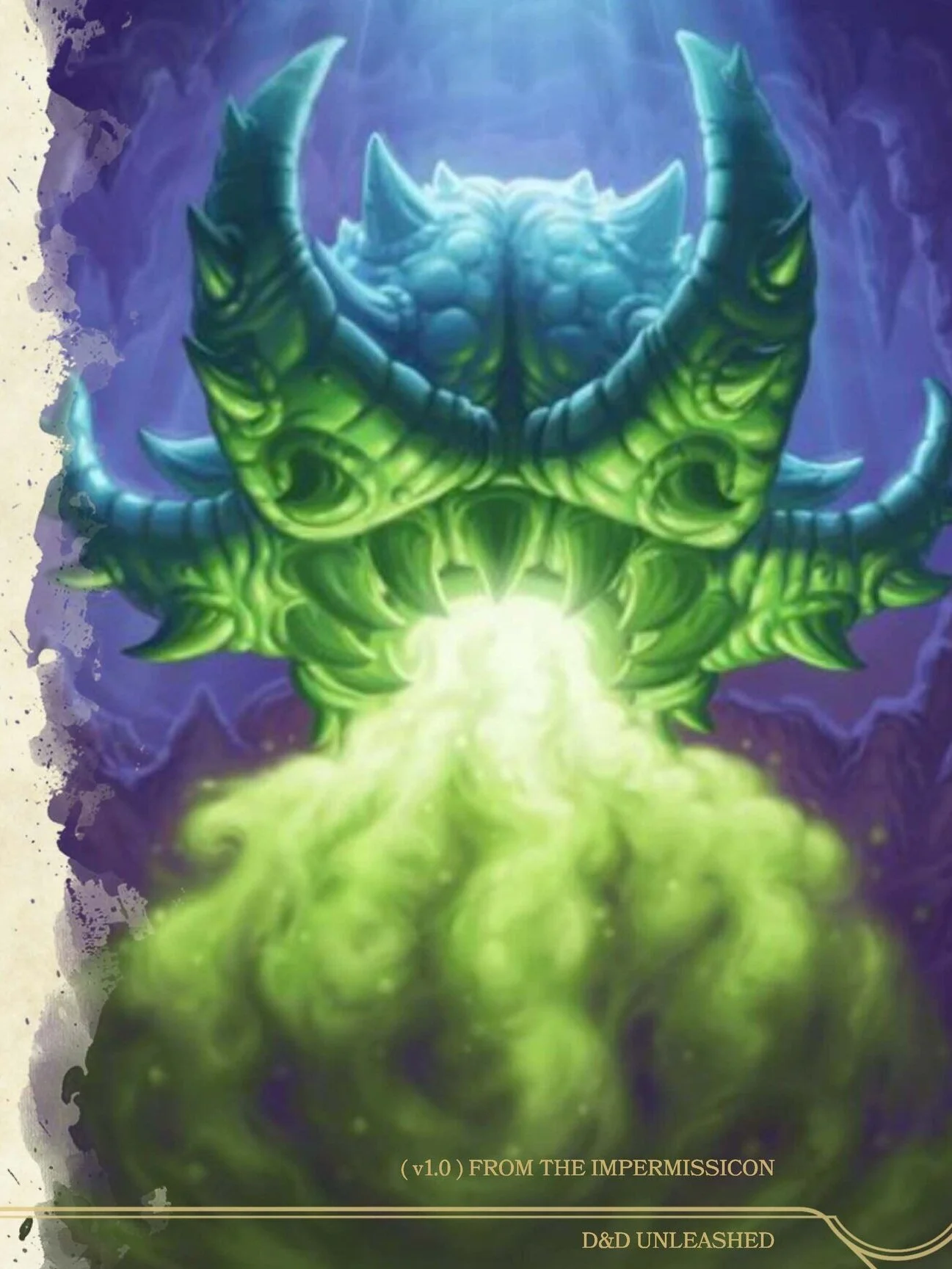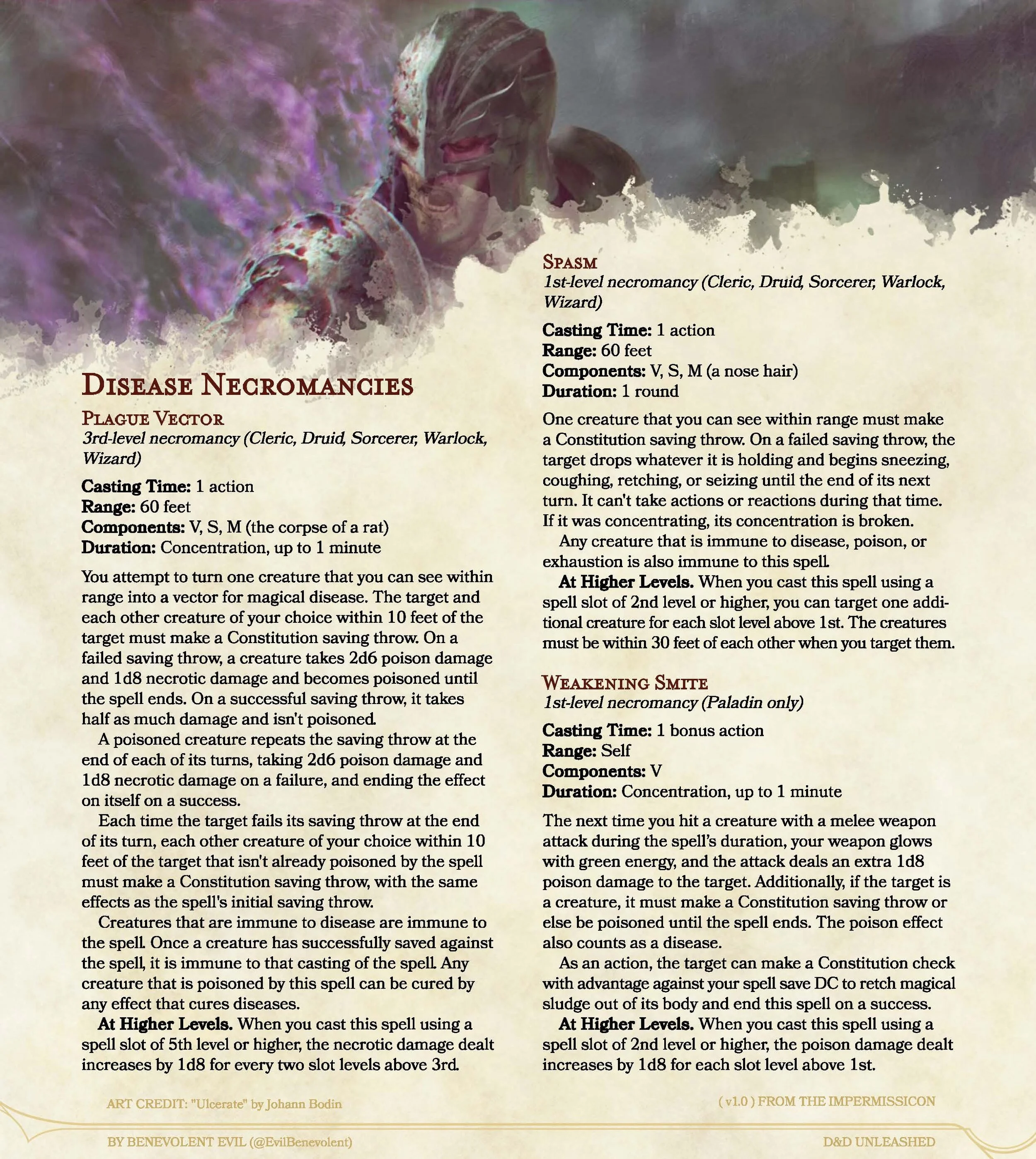New Spells: Snake Poison
The most updated version of this content can be found within The Impermissicon, a free 254-page compendium that you can download right here, filled with 24 subclasses, 3 prestige classes, 2 feats, 107 spells, 118 spell variants, 91 monsters, 61 magic items, 24 poisons, 23 diseases, and even more goodies themed around lycanthropes, vampires, and forbidden magic for both players and DMs!
PDF Link | D&D Beyond: Poison Fang, Venom Lash
Art Credit: https://www.artofmtg.com/art/alchemists-gift/
Going along with the preview of the plague warden ranger, we’re bringing you two new spells with poison damage and the poisoned condition from the upcoming compendium of forbidden magic and dark forces, The Impermissicon. They’re great additions to any spellcaster that specializes in poison damage, such as a green dragon sorcerer. Like almost every other poison spell, these two spells are limited by the sheer magnitude of D&D monsters and enemies that are immune to poison damage and the poisoned condition. Despite that blind spot, these two poison spells, both of which are themed around snakes and other venomous creatures, are potent enough to take out even an elephant! How does their design compare to other spells?
Poison fang is a weapon-conjuring spell in the same vein as flame blade, soul blade, and water whip. Instead of a scimitar, longsword, or whip, this spell creates a dagger made out of poison, which means it can be thrown for a ranged attack just like any dagger. As a high-level concentration spell, it easily outpaces cantrips and low-level spells for single-target damage with each attack, but much of the power of the spell resides in the long-lasting poisoned condition that the attack applies to the target. A caster wielding a poison fang can deal high damage to a new target each turn and poison each one as it does. Like the other weapon spells, this spell lasts up to 10 minutes, meaning that it can sometimes last for multiple encounters, especially in a classic dungeon-delve-style scenario.
Venom lash owes much of its potency to the fact that it does absolutely nothing on a miss, earning it extra power on a hit to balance out. It’s a 4th-level spell that focuses on single-target damage, so its closest comparison is the blight spell, which does do half damage on a “miss.” For venom lash to deal as much damage as blight, the target needs to fail at least one saving throw after being hit by the spell attack. Although the potential to deal more damage over time with repeated failed saving throws exist, that still makes venom lash a bit weak for its level in terms of how much damage it deals since most combats don’t last more than a few rounds. But the spell also applies the poisoned condition, bringing it up to a competitive power level for its spell level. The spell also bears some similarity to thorn whip, since both spells deal piercing damage and pull the target on a hit. In many ways, venom lash is an upgraded, poisoning version of thorn whip, and so it can pull its target even if the target is size Huge or larger, although venom lash has half as much range as thorn whip does.
Both of these spells are much higher-level than ray of sickness, so they have the advantage of debuffing their targets on a hit like ray of enfeeblement does, without requiring an initial saving throw. So if you happen to fight a deadly monster with legendary resistance that happens to not be immune to the poisoned condition, you can still guarantee at least a turn of the poisoning as long as you can hit. Of course, you might also use these spells without regard to their power or capabilities, simply because you want to flavor your spellcaster around snakes, centipedes, or scorpions! This kind of flexibility is what you can expect when you play your game of D&D using D&D Unleashed.
PDF Link | D&D Beyond: Poison Fang, Venom Lash








